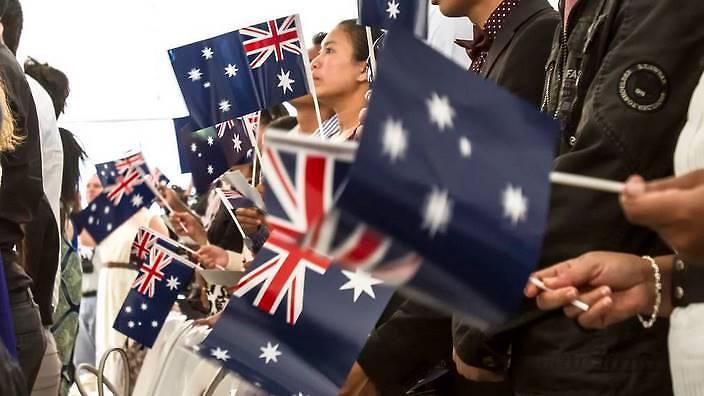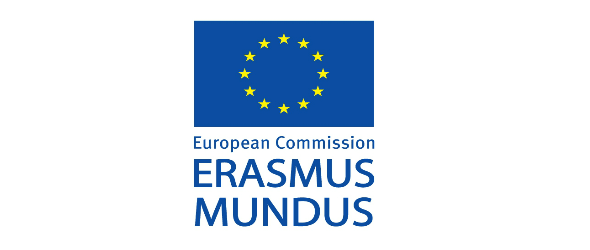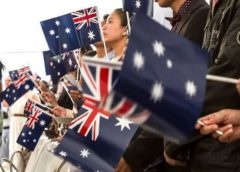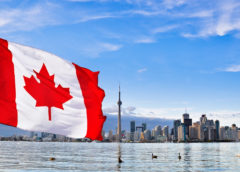Aboriginal peoples
Although not without conflict, European Canadians’ early interactions with First Nations and Inuit populations were relatively peaceful. The Crown and Aboriginal peoples began interactions during the European colonialization period, though, the Inuit, in general, had more limited interaction with European settlers. From the late 18th century, European Canadians encouraged Aboriginals to assimilate into their own culture. These attempts reached a climax in the late 19th and early 20th centuries with forced integration and relocations. A period of redress is underway, which started with the appointment of the Truth and Reconciliation Commission of Canada by the Canadian government.
European colonization
The first known attempt at European colonization began when Norsemen settled briefly at L’Anse aux Meadows in Newfoundland around 1000 AD. No further European exploration occurred until 1497, when Italian seafarer John Cabot explored and claimed Canada’s Atlantic coast in the name of King Henry VII of England. Then Basque and Portuguese mariners established seasonal whaling and fishing outposts along the Atlantic coast in the early 16th century. In 1534, French explorer Jacques Cartier explored the Saint Lawrence River, where, on July 24, he planted a 10-metre (33 ft) cross bearing the words “Long Live the King of France” and took possession of the territory (known as the colony of Canada) in the name of King Francis I. In general the settlements appear to have been short-lived, possibly due to the similarity of outputs producible in Scandinavia and northern Canada and the problems of navigating trade routes at that time.
In 1583, Sir Humphrey Gilbert, by the royal prerogative of Queen Elizabeth I, founded St. John’s, Newfoundland, as the first North American English colony. French explorer Samuel de Champlain arrived in 1603 and established the first permanent European settlements at Port Royal (in 1605) and Quebec City (in 1608). Among the colonists of New France, Canadiens extensively settled the Saint Lawrence River valley and Acadians settled the present-day Maritimes, while fur traders and Catholic missionaries explored the Great Lakes, Hudson Bay, and the Mississippi watershed to Louisiana. The Beaver Wars broke out in the mid-17th century over control of the North American fur trade.
The English established additional colonies in Cupids and Ferryland, Newfoundland, beginning in 1610. The Thirteen Colonies to the south were founded soon after. A series of four wars erupted in colonial North America between 1689 and 1763; the later wars of the period constituted the North American theat of the Seven Years’ War. Mainland Nova Scotia came under British rule with the 1713 Treaty of Utrecht and the 1763 Treaty of Paris ceded Canada and most of New France to Britain after the Seven Years’ War.
The Royal Proclamation of 1763 created the Province of Quebec out of New France, and annexed Cape Breton Island to Nova Scotia. St. John’s Island (now Prince Edward Island) became a separate colony in 1769. To avert conflict in Quebec, the British parliament passed the Quebec Act of 1774, expanding Quebec’s territory to the Great Lakes and Ohio Valley. It re-established the French language, Catholic faith, and French civil law there. This angered many residents of the Thirteen Colonies, fuelling anti-British sentiment in the years prior to the 1775 outbreak of the American Revolution.
The 1783 Treaty of Paris recognized American independence and ceded the newly added territories south (but not north) of the Great Lakes to the new United States. New Brunswick was split from Nova Scotia as part of a reorganization of Loyalist settlements in the Maritimes. To accommodate English-speaking Loyalists in Quebec, the Constitutional Act of 1791 divided the province into French-speaking Lower Canada (later Quebec) and English-speaking Upper Canada (later Ontario), granting each its own elected legislative assembly.
The Canadas were the main front in the War of 1812 between the United States and Britain. Peace came in 1815; no boundaries were changed. Immigration now resumed at a higher level, with over 960,000 arrivals from Britain 1815-50. New arrivals included Irish refugees escaping the Great Irish Famine as well as Gaelic-speaking Scots displaced by the Highland Clearances. Infectious diseases killed between 25 and 33 per cent of Europeans who immigrated to Canada before 1891.
The desire for responsible government resulted in the abortive Rebellions of 1837. The Durham Report subsequently recommended responsible government and the assimilation of French Canadians into English culture. The Act of Union 1840 merged the Canadas into a united Province of Canada and responsible government was established for all provinces of British North America by 1849. The signing of the Oregon Treaty by Britain and the United States in 1846 ended the Oregon boundary dispute, extending the border westward along the 49th parallel. This paved the way for British colonies on Vancouver Island (1849) and in British Columbia (1858).
Confederation and expansion
Following several constitutional conferences, the 1867 Constitution Act officially proclaimed Canadian Confederation on July 1, 1867, initially with four provinces: Ontario, Quebec, Nova Scotia, and New Brunswick. Canada assumed control of Rupert’s Land and the North-Western Territory to form the Northwest Territories, where the Métis’ grievances ignited the Red River Rebellion and the creation of the province of Manitoba in July 1870. British Columbia and Vancouver Island (which had been united in 1866) joined the confederation in 1871, while Prince Edward Island joined in 1873.
The Canadian parliament passed a bill introduced by the Conservative Cabinet that established a National Policy of tariffs to protect the nascent Canadian manufacturing industries. To open the West, parliament also approved sponsoring the construction of three transcontinental railways (including the Canadian Pacific Railway), opening the prairies to settlement with the Dominion Lands Act, and establishing the North-West Mounted Police to assert its authority over this territory. In 1898, during the Klondike Gold Rush in the Northwest Territories, parliament created the Yukon Territory. The Cabinet of Liberal Prime Minister Wilfrid Laurier fostered continental European immigrants settling the prairies and Alberta and Saskatchewan became provinces in 1905.
Early 20th century
The Great Depression in Canada during the early 1930s saw an economic downturn, leading to hardship across the country. In response to the downturn, the Co-operative Commonwealth Federation (CCF) in Saskatchewan introduced many elements of a welfare state (as pioneered by Tommy Douglas) in the 1940s and 1950s. On the advice of Prime Minister William Lyon Mackenzie King, war with Germany was declared effective September 10, 1939 by King George VI, seven days after the United Kingdom. The delay underscored Canada’s independence.
The first Canadian Army units arrived in Britain in December 1939. In all, over a million Canadians served in the armed forces during World War II and approximately 42,000 were killed and another 55,000 were wounded. Canadian troops played important roles in many key battles of the war, including the failed 1942 Dieppe Raid, the Allied invasion of Italy, the Normandy landings, the Battle of Normandy, and the Battle of the Scheldt in 1944. Canada provided asylum for the Dutch monarchy while that country was occupied and is credited by the Netherlands for major contributions to its liberation from Nazi Germany. The Canadian economy boomed during the war as its industries manufactured military materiel for Canada, Britain, China, and the Soviet Union. Despite another Conscription Crisis in Quebec in 1944, Canada finished the war with a large army and strong economy.
Contemporary era
The financial crisis of the great depression had led the Dominion of Newfoundland to relinquish responsible government in 1934 and become a crown colony ruled by a British governor. After two bitter referendums, Newfoundlanders voted to join Canada in 1949 as a province.
Canada’s post-war economic growth, combined with the policies of successive Liberal governments, led to the emergence of a new Canadian identity, marked by the adoption of the current Maple Leaf Flag in 1965, the implementation of official bilingualism (English and French) in 1969, and the institution of official multiculturalism in 1971. Socially democratic programs were also instituted, such as Medicare, the Canada Pension Plan, and Canada Student Loans, though provincial governments, particularly Quebec and Alberta, opposed many of these as incursions into their jurisdictions. Finally, another series of constitutional conferences resulted in the 1982 patriation of Canada’s constitution from the United Kingdom, concurrent with the creation of the Canadian Charter of Rights and Freedoms. In 1999, Nunavut became Canada’s third territory after a series of negotiations with the federal government.
At the same time, Quebec underwent profound social and economic changes through the Quiet Revolution of the 1960s, giving birth to a modern nationalist movement. The radical Front de libération du Québec (FLQ) ignited the October Crisis with a series of bombings and kidnappings in 1970 and the sovereignist Parti Québécois was elected in 1976, organizing an unsuccessful referendum on sovereignty-association in 1980. Attempts to accommodate Quebec nationalism constitutionally through the Meech Lake Accord failed in 1990. This led to the formation of the Bloc Québécois in Quebec and the invigoration of the Reform Party of Canada in the West. A second referendum followed in 1995, in which sovereignty was rejected by a slimmer margin of 50.6 to 49.4 percent. In 1997, the Supreme Court ruled that unilateral secession by a province would be unconstitutional and the Clarity Act was passed by parliament, outlining the terms of a negotiated departure from Confederation.
In addition to the issues of Quebec sovereignty, a number of crises shook Canadian society in the late 1980s and early 1990s. These included the explosion of Air India Flight 182 in 1985, the largest mass murder in Canadian history; the École Polytechnique massacre in 1989, a university shooting targeting female students; and the Oka Crisis of 1990, the first of a number of violent confrontations between the government and Aboriginal groups. Canada also joined the Gulf War in 1990 as part of a US-led coalition force and was active in several peacekeeping missions in the 1990s, including the UNPROFOR mission in the former Yugoslavia.
Canada sent troops to Afghanistan in 2001, but declined to join the US-led invasion of Iraq in 2003.In 2009, Canada’s economy suffered in the worldwide Great Recession, but it has since largely rebounded. In 2011, Canadian forces participated in the NATO-led intervention into the Libyan civil war, and also became involved in battling the Islamic State insurgency in Iraq in the mid-2010s.











